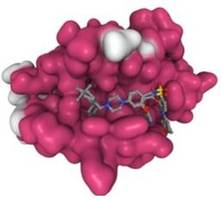New AutoDock Vina Software Designed to Predict The Mechanism of Small Molecules
Press Release Summary:

- Can predict binding mode and affinity between the two biomolecules through calculation
- Used to dock multiple ligands and dock a large number of ligands in batches
- Ideal for computational docking of molecules and protein structures
Original Press Release:
CD ComputaBio Releases AutoDock Vina Software to Accelerate Molecular Docking Projects
CD ComputaBio, a reliable computational biology service provider in New York, is committed to assisting research and trials, as well as providing access to the latest software, technologies, and expertise with competitive prices and fast turnarounds for researchers. The company has recently announced the introduction of its Autodock Vina software, designed to predict the mechanism of small molecules, such as substrates or drug candidates, binding to receptors with known 3D structures.
During the early stage of drug discovery, molecular screening of lead compounds is the most important initiation link after target confirmation. Meanwhile, virtual screening is an important and effective way that has attracted widespread attention and is gradually being deployed in various industrial applications. The goal of virtual screening regards the identification of small molecules that can bind to specific target sites from a large-scale molecular library. In this process, huge computing power is required to meet the virtual screening of large-scale molecular libraries.
The open-source software that is widely used in the field of virtual screening is known as Auto Dock Vina. As an open-source molecular simulation software, Vina is used primarily to perform ligand-protein molecular docking. Molecular docking is a technical method for simulating the interaction between small molecular ligands and receptors based on the "lock and key model". Furthermore, ligand-receptor interaction is a molecular recognition process, mainly including electrostatic interaction, hydrogen bond interaction, hydrophobic interaction, van der Waals interaction, etc. The binding mode and affinity between the two biomolecules can be predicted through calculation. It usually takes 1-10 seconds to perform molecular docking using Vina, which will take longer if flexible docking is required.
In production applications, users usually need to dock millions of molecules and protein structures, which requires an extensive period of time. It may take months to run a task in stand-alone mode through a conventional strategy. That said, it is ineffective for a single machine to complete the large-scale virtual machine screening task. Autodock Vina is one of the most widely used bioinformatics software for computational docking. Scientists from CD ComputaBio can simultaneously dock multiple ligands and dock a large number of ligands in batches utilizing the Autodock Vina docking platform.
"AutoDock Vina achieves about two orders of magnitude speedup while significantly improving the accuracy of predicted binding mode. We can predict the binding mode of small molecules to proteins by screening virtual libraries of drug-like molecules for lead compounds to accelerate drug development," stated the Chief Scientist of CD ComputaBio.
About CD ComputaBio
With years of experience, CD ComputaBio has become a professional computational biology service provider. The company can support customers with comprehensive computational biology analytical services covering molecular dynamics simulation, drug design, virtual screening, quantum chemical calculations, etc., utilizing its extensive experience and powerful technology in computational science.
Media Contact:
Company Name: CD ComputaBio
Contact Person: Vivian Smith
Phone: +1-631-371-4691
Country: United States
Website: www.computabio.com




